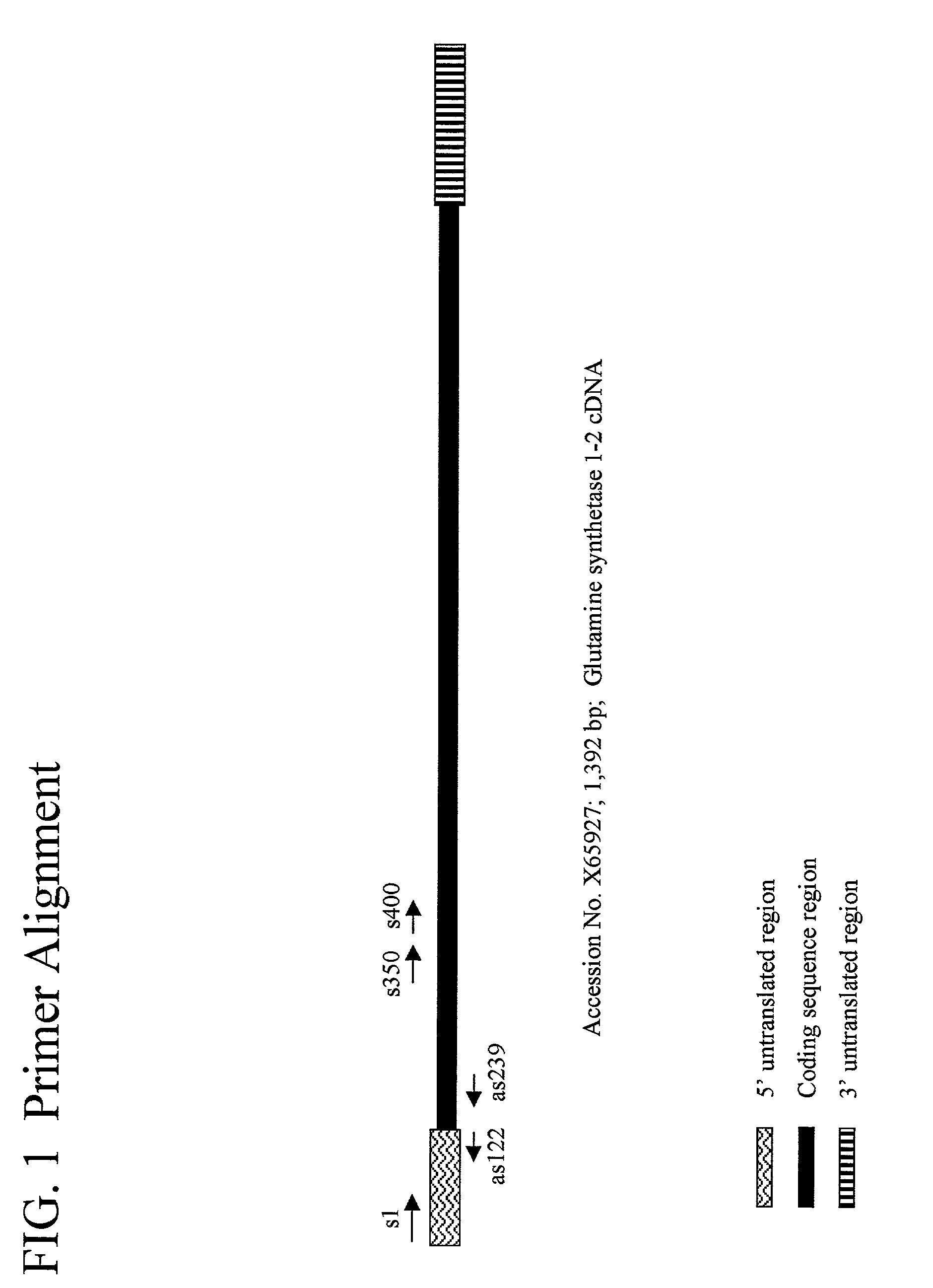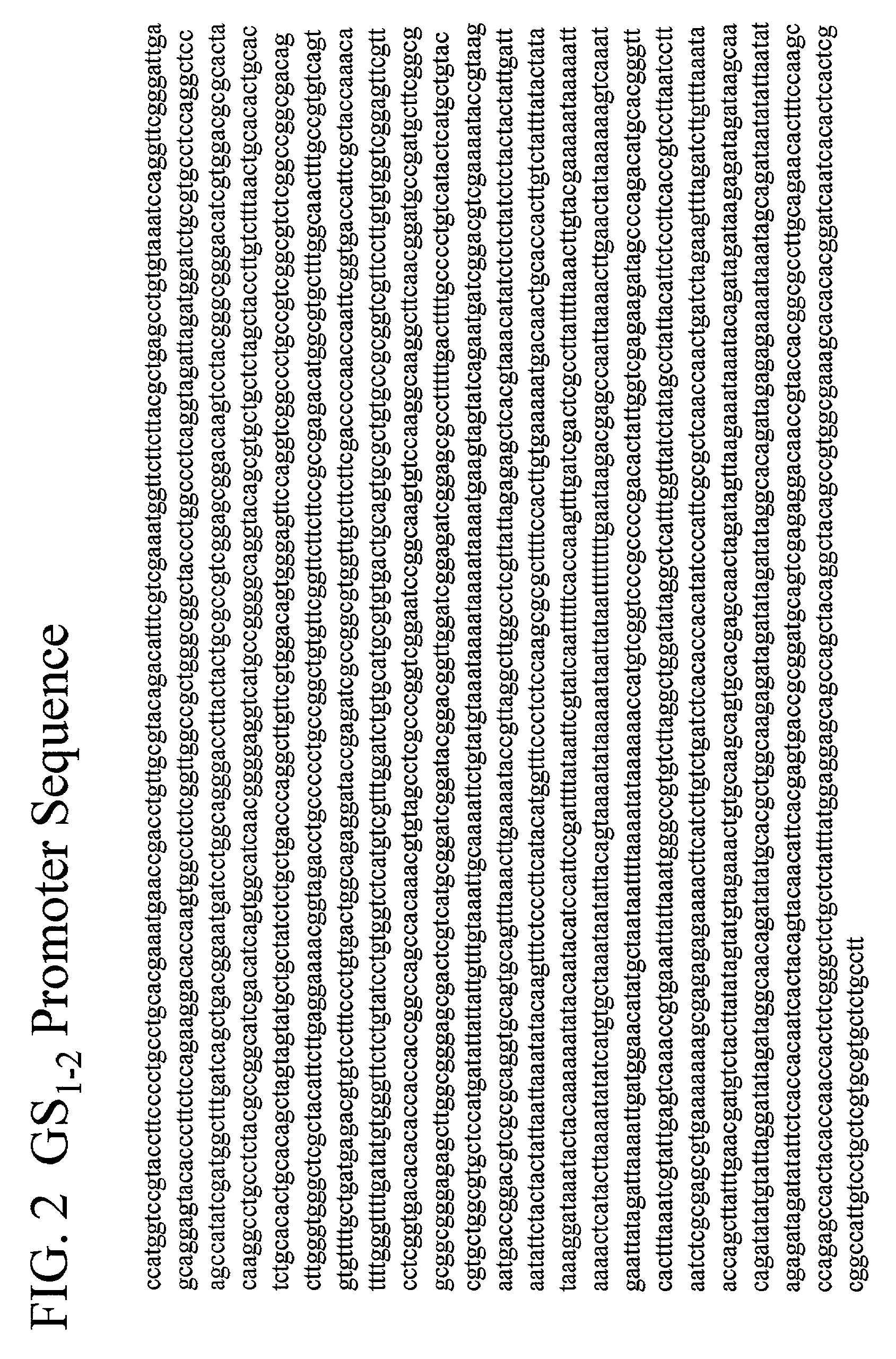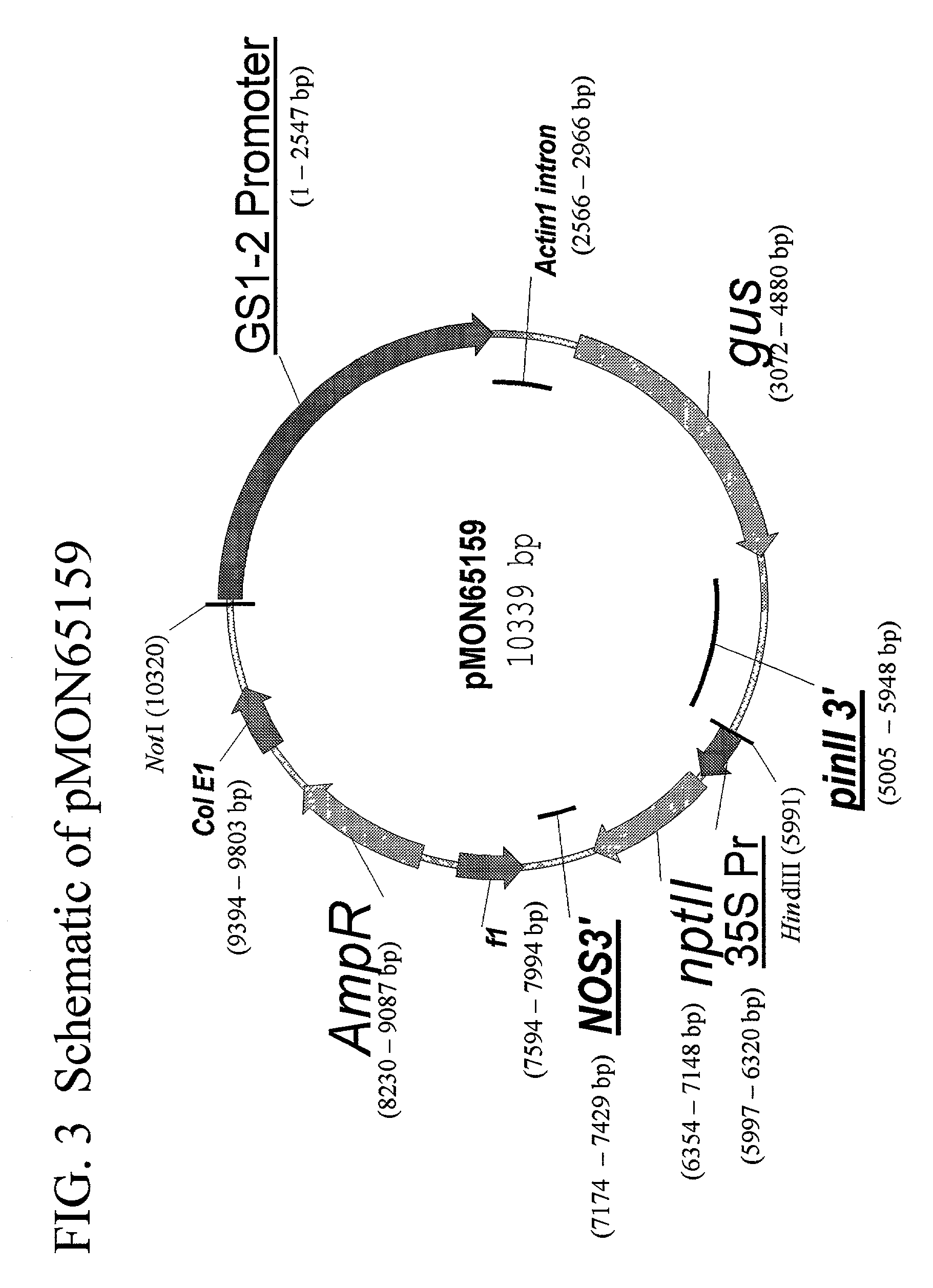Maize cytoplasmic glutamine synthetase promoter compositions and methods for use thereof
a technology of cytoplasmic glutamine and promoter composition, which is applied in the field of transgenic plants, can solve the problems of insufficient number of effective promoters available for use with transgenes in maize and even smaller ones specific to kernel development, so as to enhance grain composition or quality, enhance environment or stress resistance, and enhance nutrient utilization
- Summary
- Abstract
- Description
- Claims
- Application Information
AI Technical Summary
Benefits of technology
Problems solved by technology
Method used
Image
Examples
example 1
Isolation of a Zea mays Cytoplasmic, Pedicel-Specific Glutamine Synthetase GS1-2 Promoter
[0336]Inverse PCR was used as described herein to isolate the maize GS1-2 promoter from Zea mays 01IBH2 (a DeKalb proprietary inbred line) genomic DNA. Approximately 1 μg of maize genomic DNA was digested with PstI restriction enzyme according to manufacturer's recommendations (Roche Molecular Biochemicals, Indianapolis Ind.). Following an overnight digestion at 37° C., the digestion reaction was purified using an Amicon MICROPURE-EZ kit and the purified, digested DNA was then concentrated to a final volume of approximately 8 μl using an Amicon MICROCON apparatus, both used as per manufacturer's recommendations (Millipore Corporation, Bedford Mass.).
[0337]Approximately 125 ng (1 μl) of the digested genomic maize DNA was then self-ligated in the presence of T4 DNA ligase, following the procedure of a Roche Rapid DNA ligation kit (Roche Molecular Biochemicals, Indianapolis Ind.). The ligation was ...
example 2
Construction of GS1-2 Promoter Containing Transformation Vectors
[0352]This example describes the construction of vector pMON65159. The pGEM vector comprising the putative GS1-2 promoter fragment was digested with NcoI and PvuI (Roche Molecular Biochemicals, Indianapolis Ind.) which allowed removal of approximately 2.55 Kb of the cloned 2.7 Kb insert. The ends of the digested DNA were made blunt using the Stratagene Klenow Fill-In Kit (Stratagene, La Jolla Calif.). The products of the digestion were separated on an agarose gel and a slice containing the 2.55 Kb fragment with the putative GS1-2 promoter was removed from the gel. The DNA was purified from the agarose gel using a GENELUTE Agarose Spin column (Sigma Chemical Co., St. Louis, Mo.) as per manufacturer's recommendations.
[0353]Vector pGUS33, comprising the uidA screenable marker gene (Jefferson et al., 1986), intron 1 from the rice actin 1 gene (McElroy et al., 1990) and pinII 3′ UTR (Graham et al., 1986), as well as the 35S ...
example 3
Preparation of Microprojectiles
[0356]Microprojectiles were prepared for use with the electric discharge particle acceleration gene delivery device (U.S. Pat. No. 5,015,580) by suspending 10 mg of 0.6 μm gold particles (BioRad) in 50 μl buffer (150 mM NaCl, 10 mM Tris-HCl, pH 8.0). About 10 to 1000 ng, preferably about 50 to 500 ng, more preferably 50 to 250 ng, and most preferably, about 150 ng of cassette DNA isolated from pMON65159 was added to the suspension of gold particles and gently vortexed for about five seconds.
[0357]Seventy five μl of 0.1M spermidine was added and the solution vortexed gently for about seconds. Seventy five μl of a 25% solution of polyethylene glycol (3000–4000 molecular weight, American Type Culture Collection) was added and the solution was gently vortexed for five seconds. Seventy five μl of 2.5 M CaCl2 was added and the solution vortexed for five seconds. Following the addition of CaCl2, the solution was incubated at room temperature for 10 to 15 minu...
PUM
| Property | Measurement | Unit |
|---|---|---|
| Temperature | aaaaa | aaaaa |
| Temperature | aaaaa | aaaaa |
| Temperature | aaaaa | aaaaa |
Abstract
Description
Claims
Application Information
 Login to View More
Login to View More - R&D
- Intellectual Property
- Life Sciences
- Materials
- Tech Scout
- Unparalleled Data Quality
- Higher Quality Content
- 60% Fewer Hallucinations
Browse by: Latest US Patents, China's latest patents, Technical Efficacy Thesaurus, Application Domain, Technology Topic, Popular Technical Reports.
© 2025 PatSnap. All rights reserved.Legal|Privacy policy|Modern Slavery Act Transparency Statement|Sitemap|About US| Contact US: help@patsnap.com



